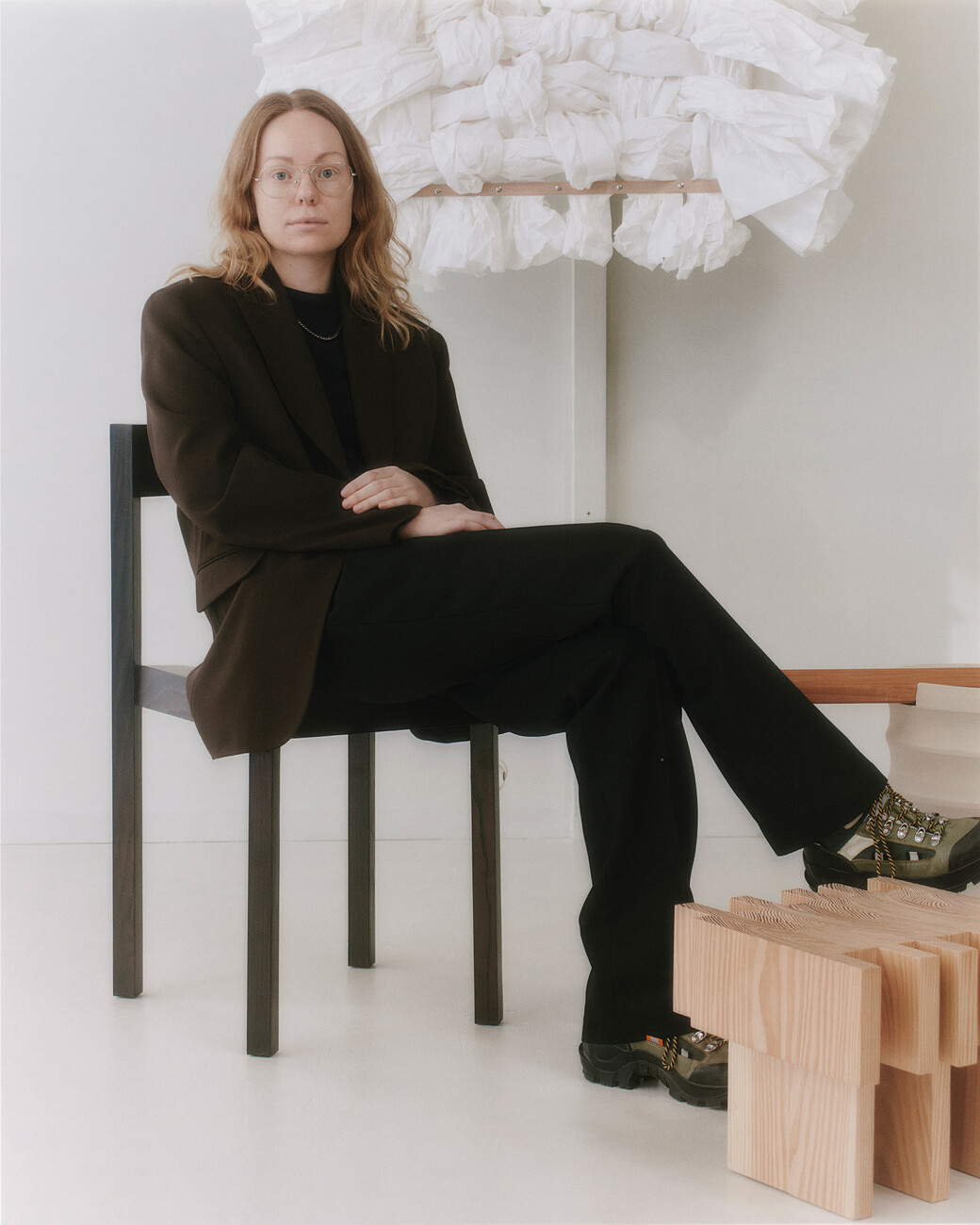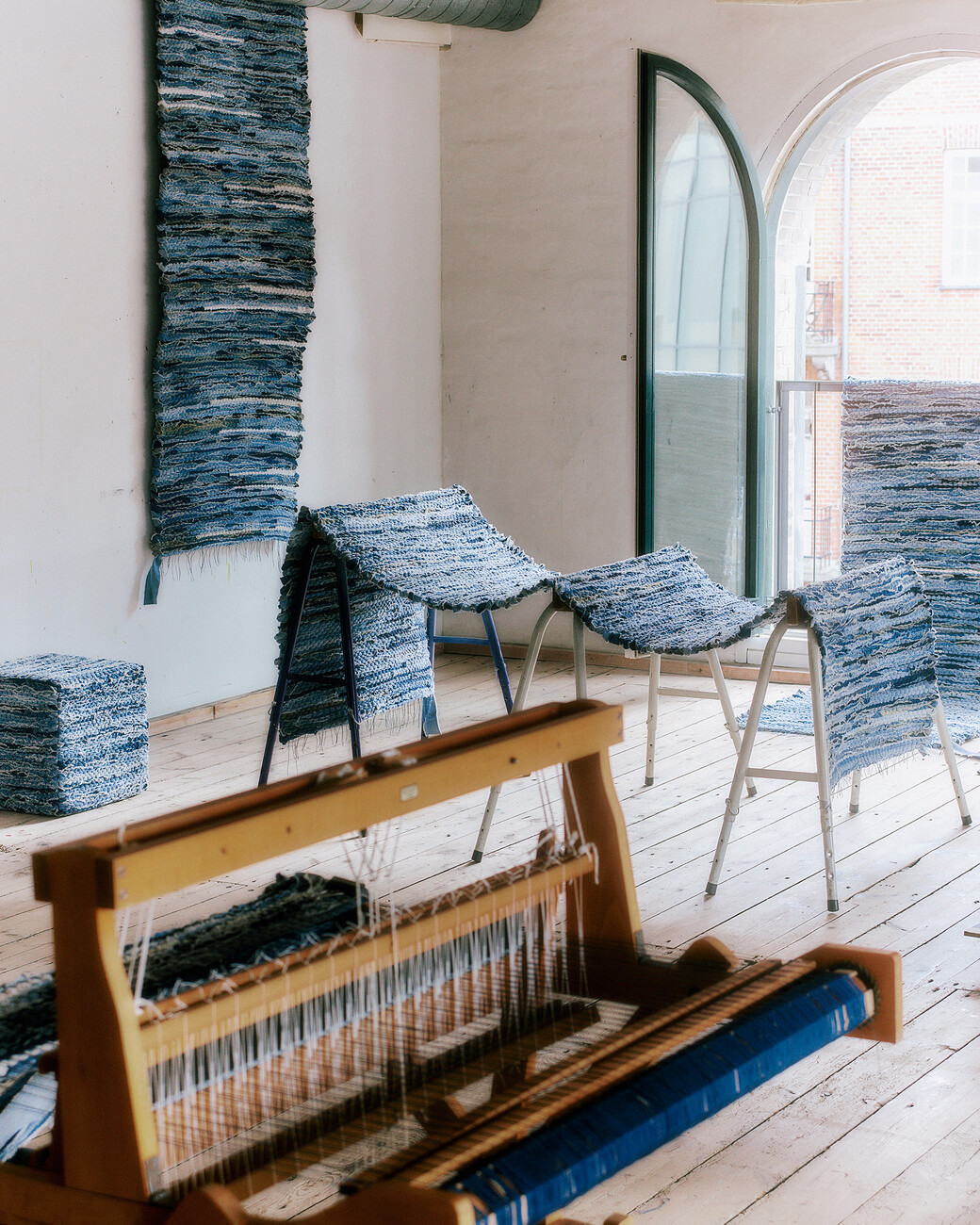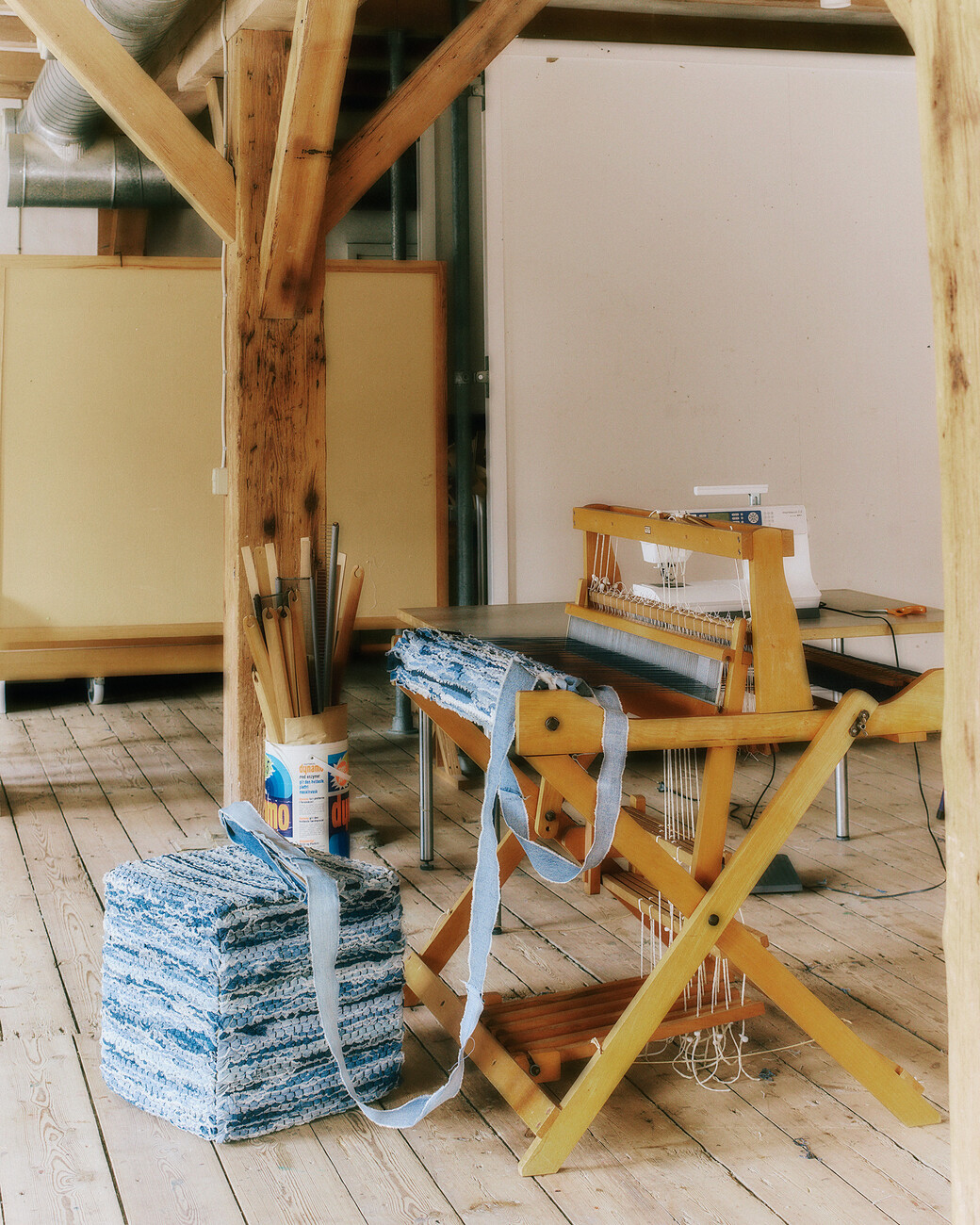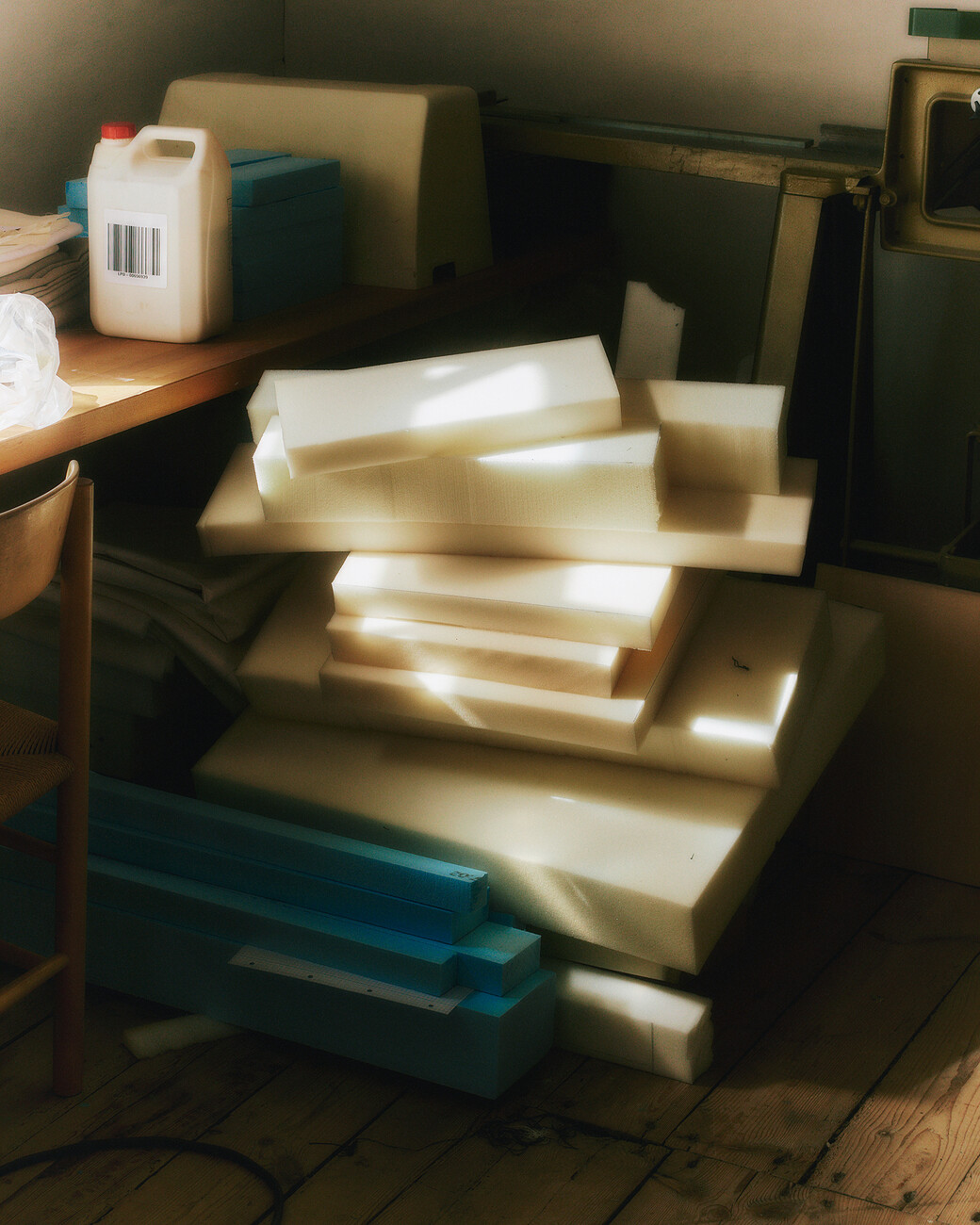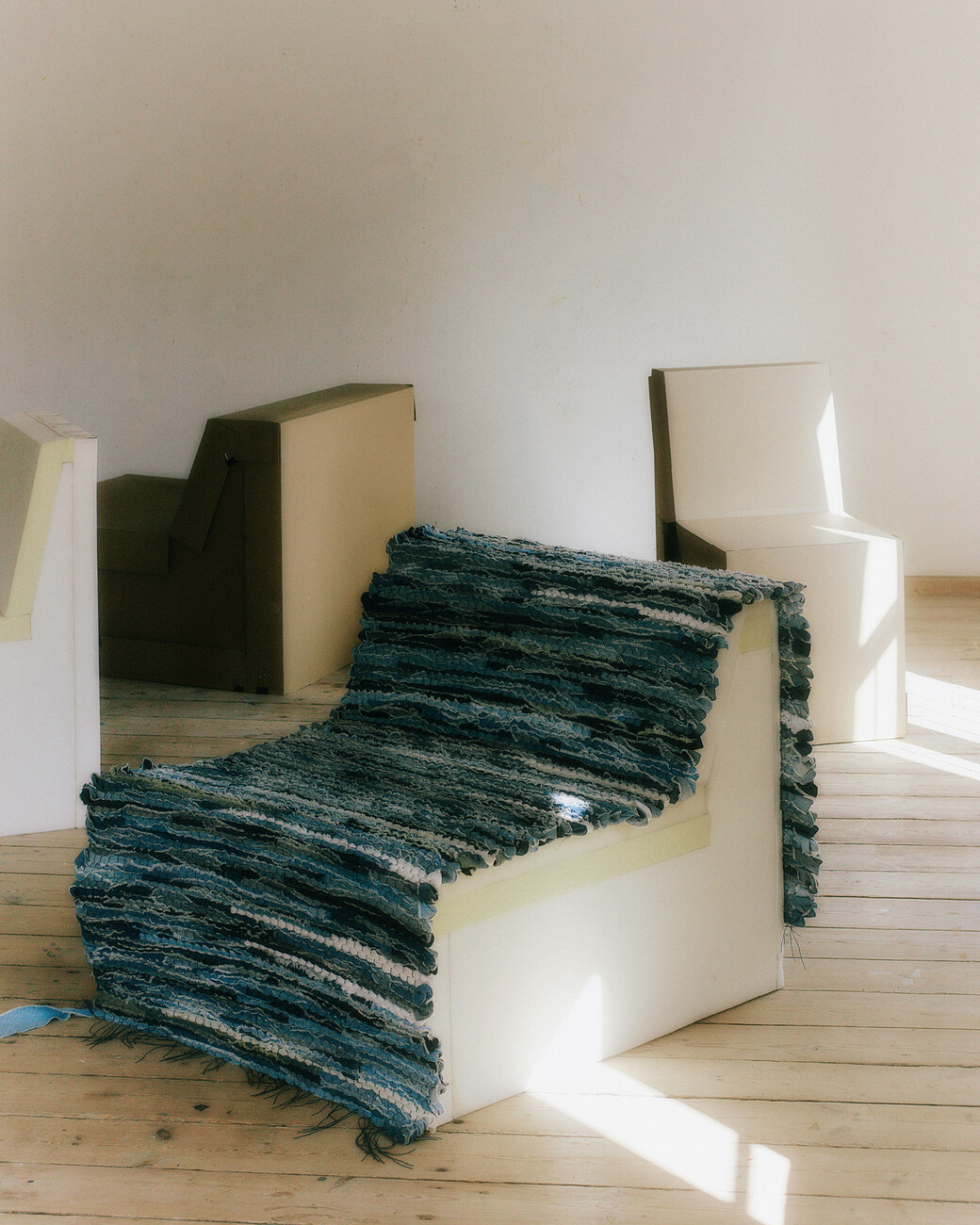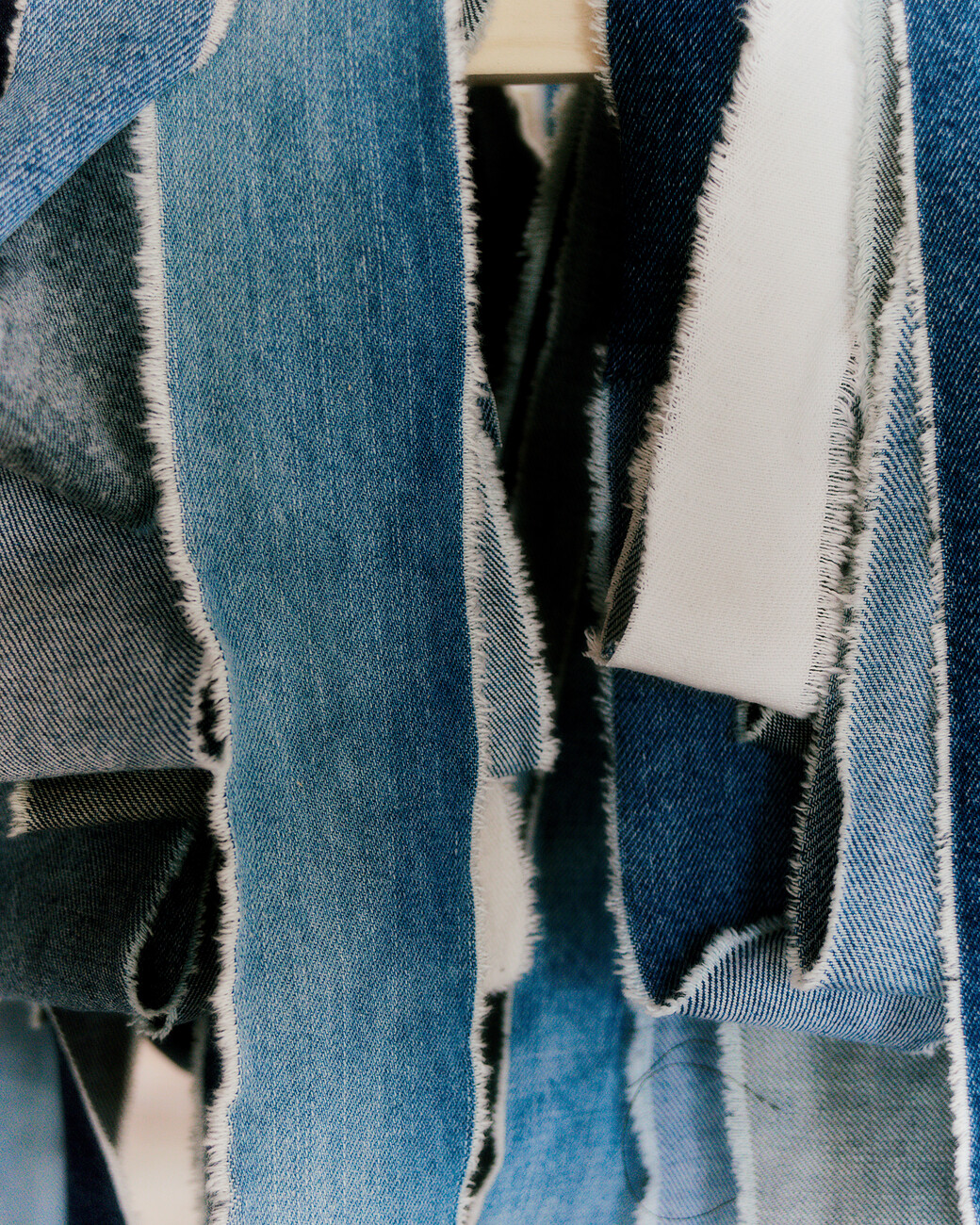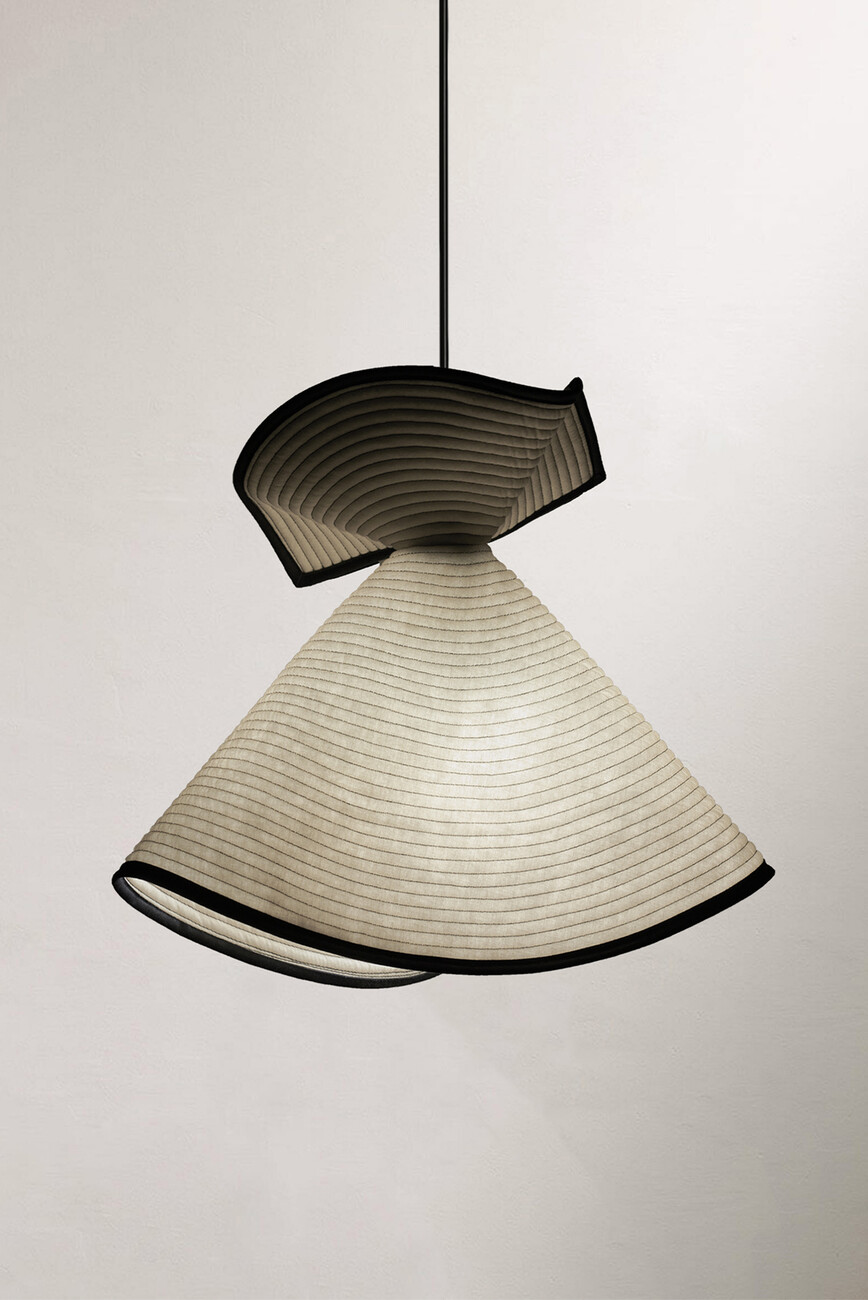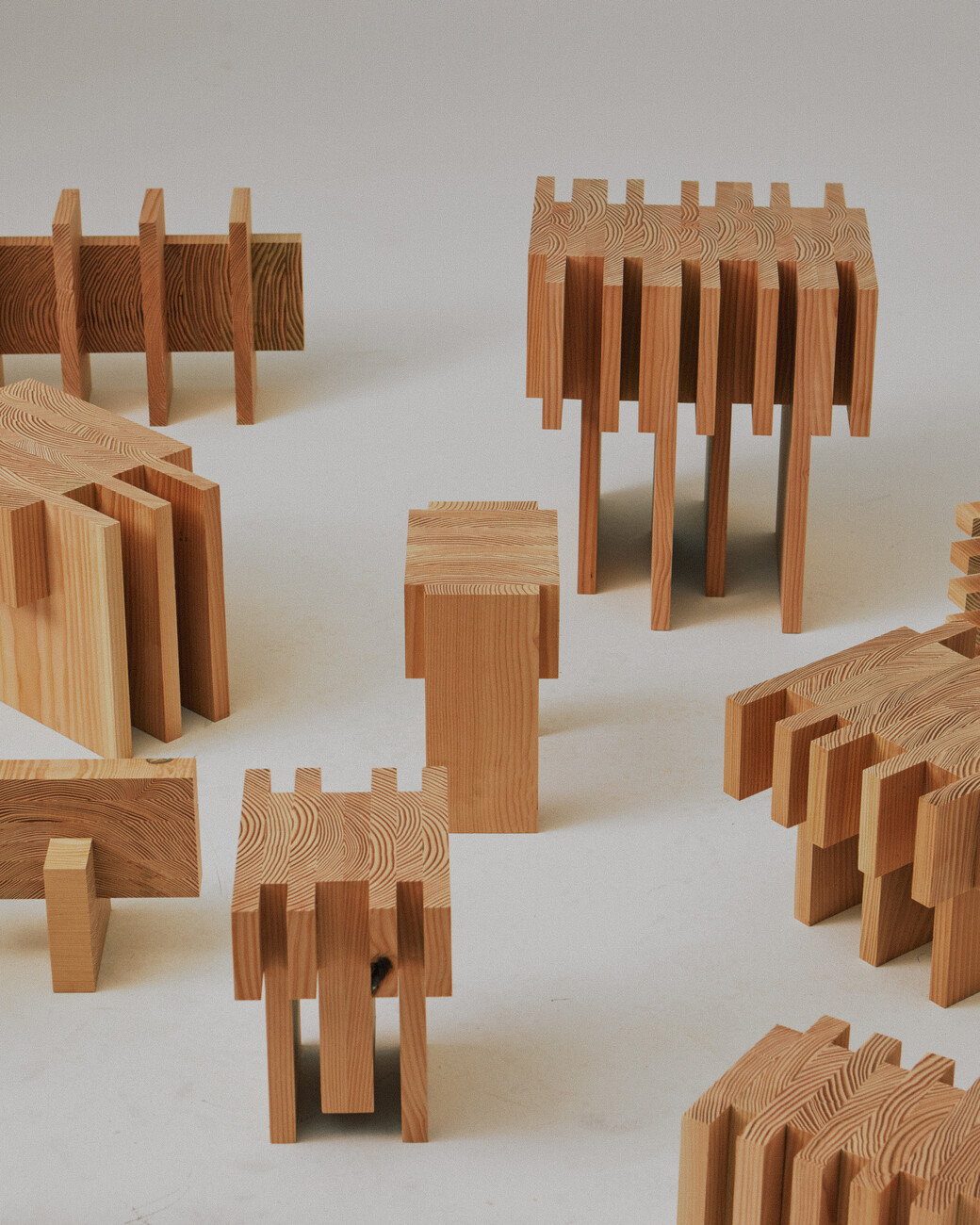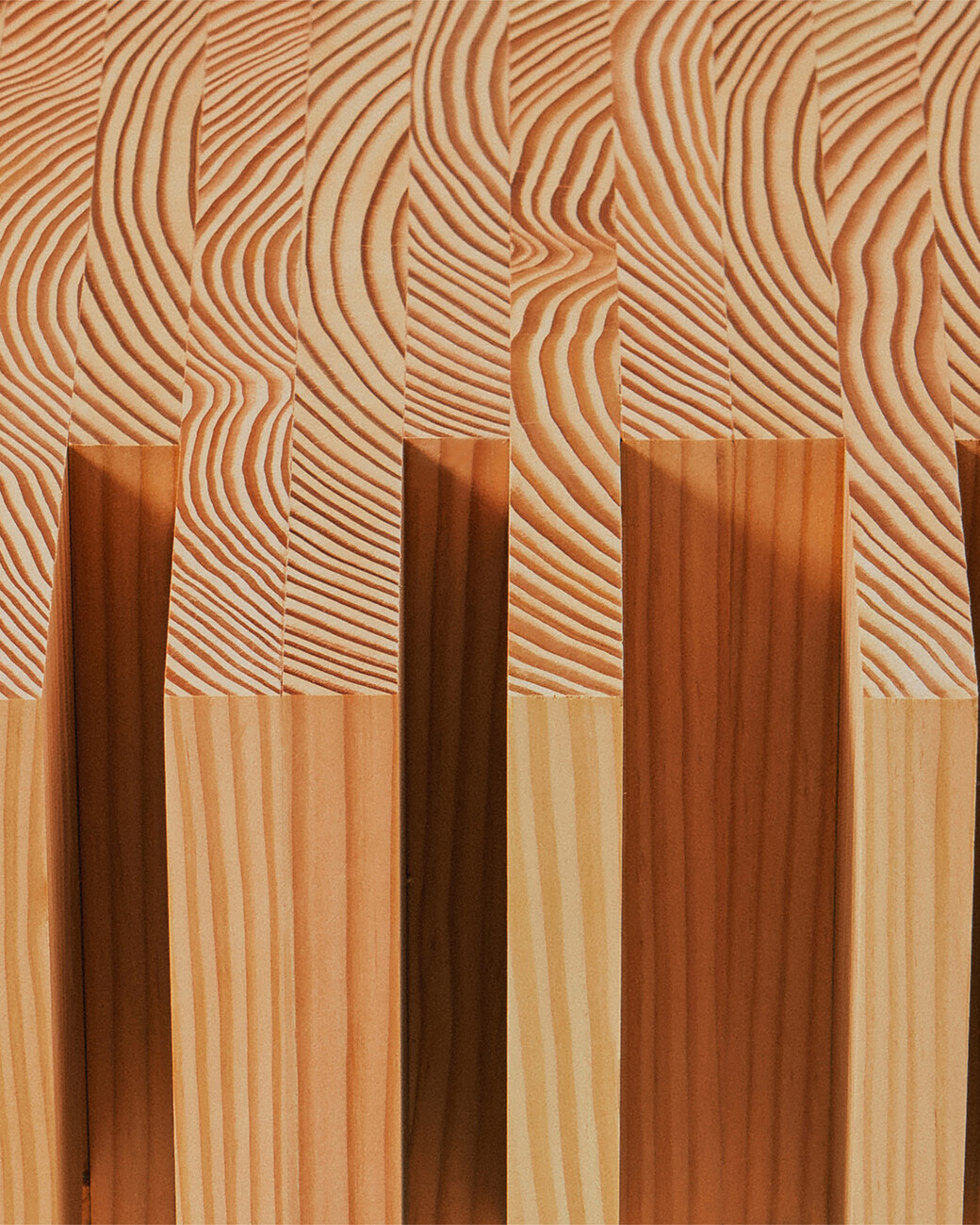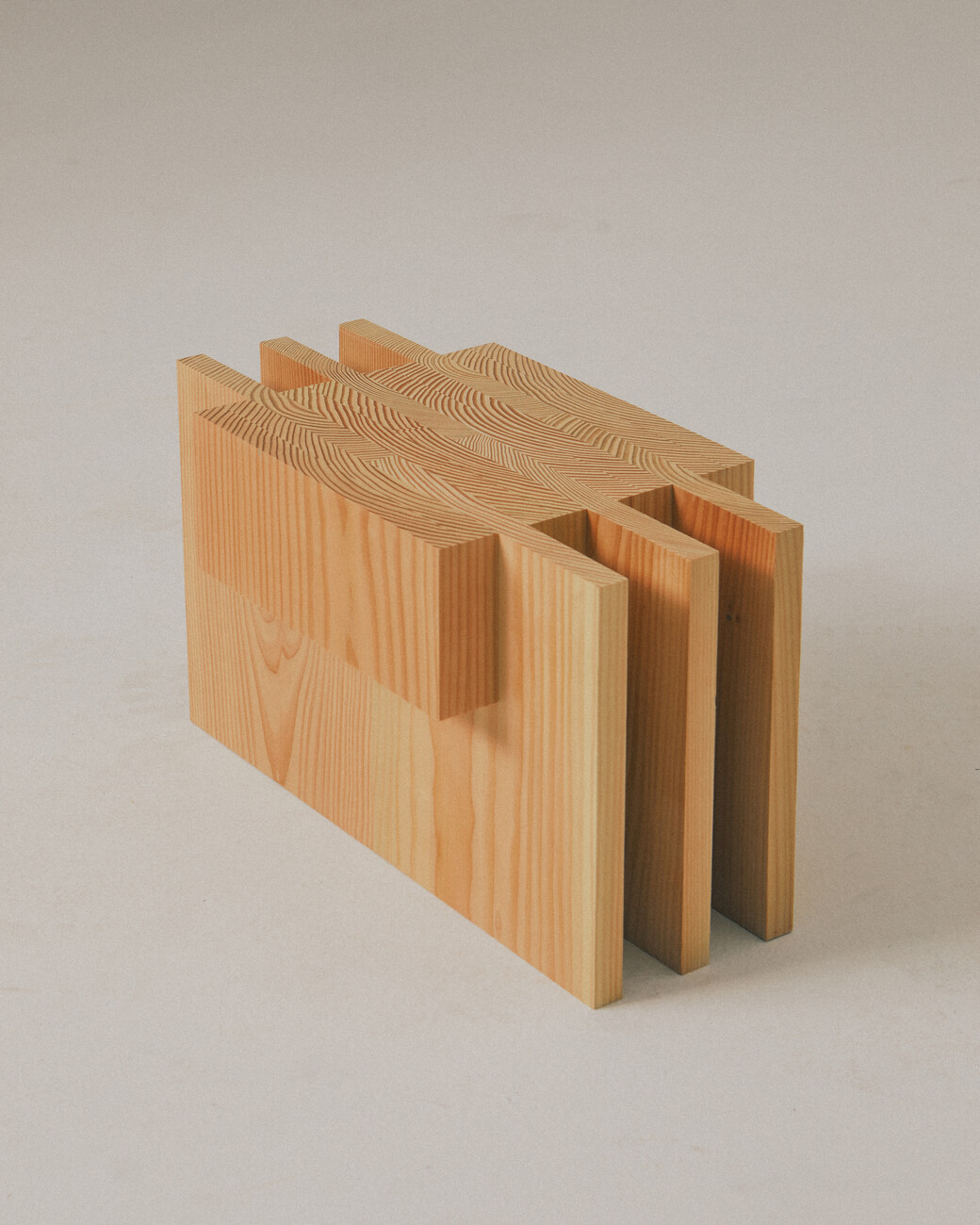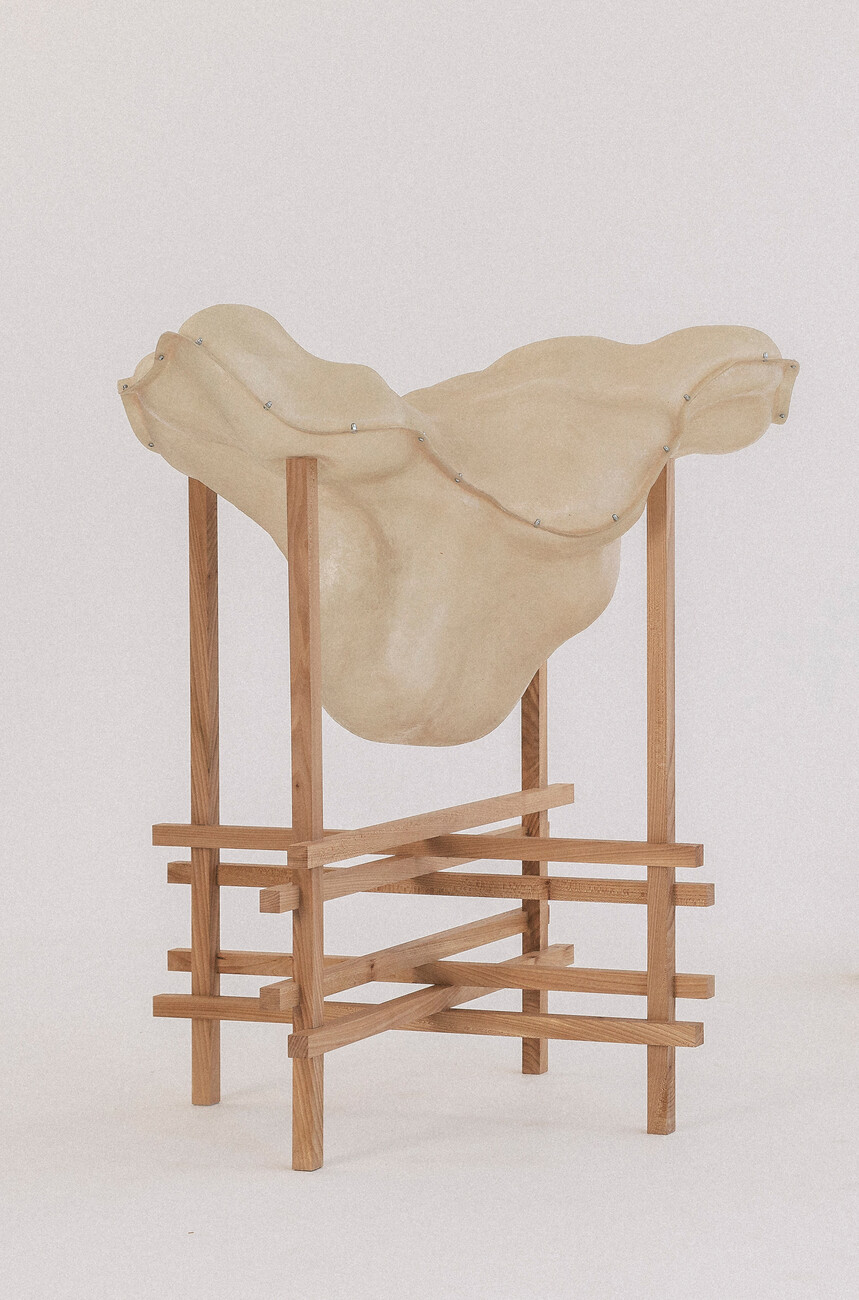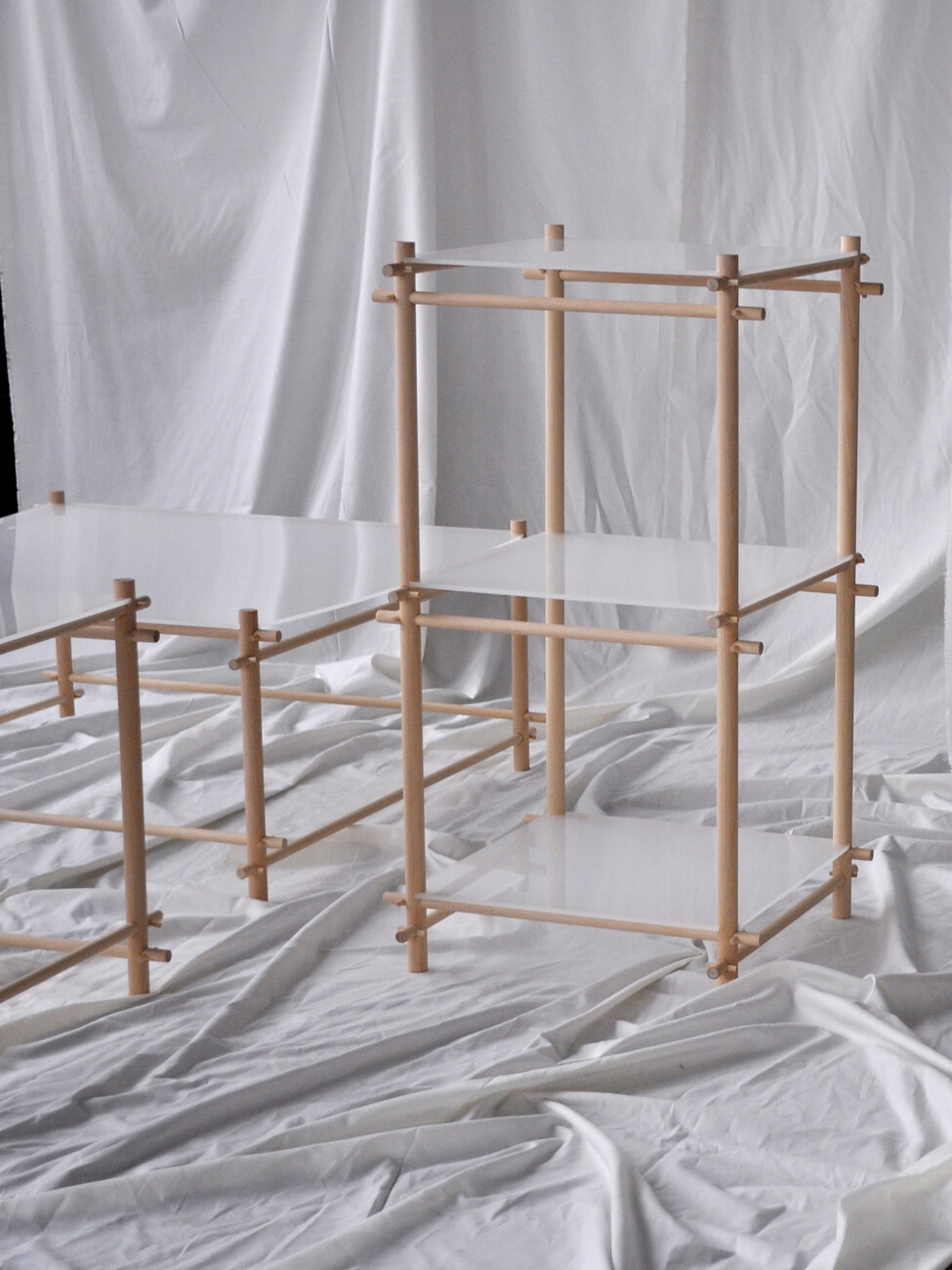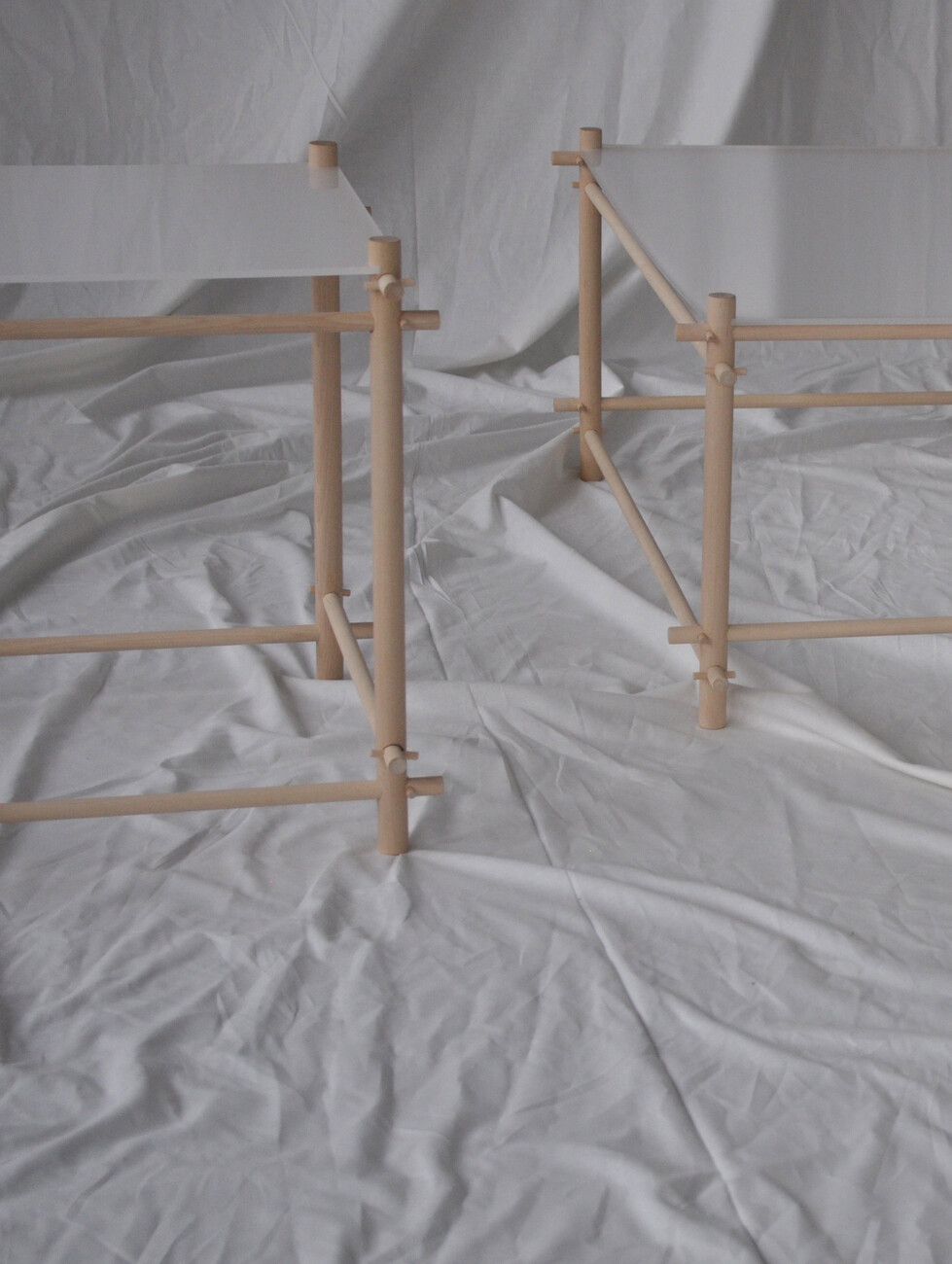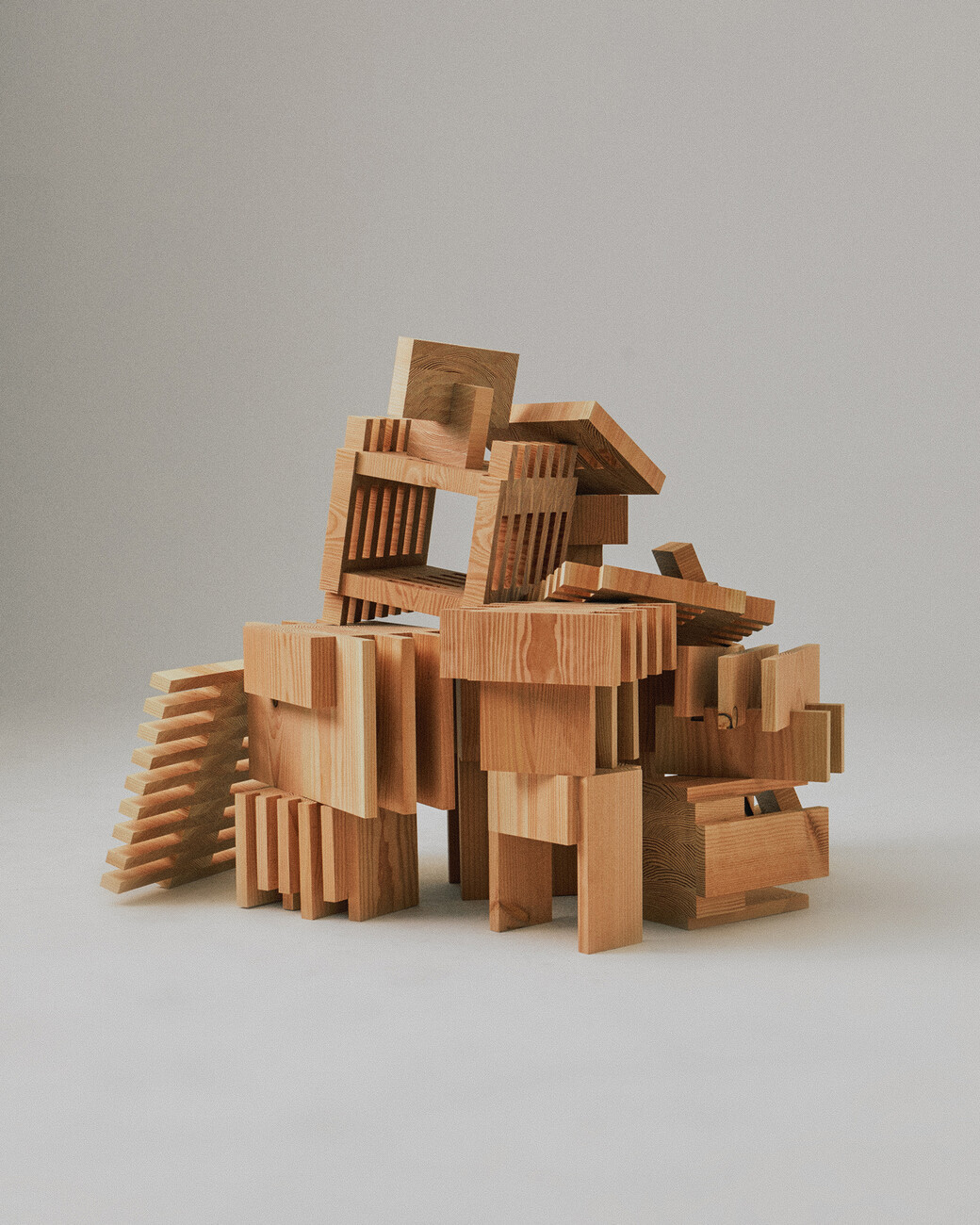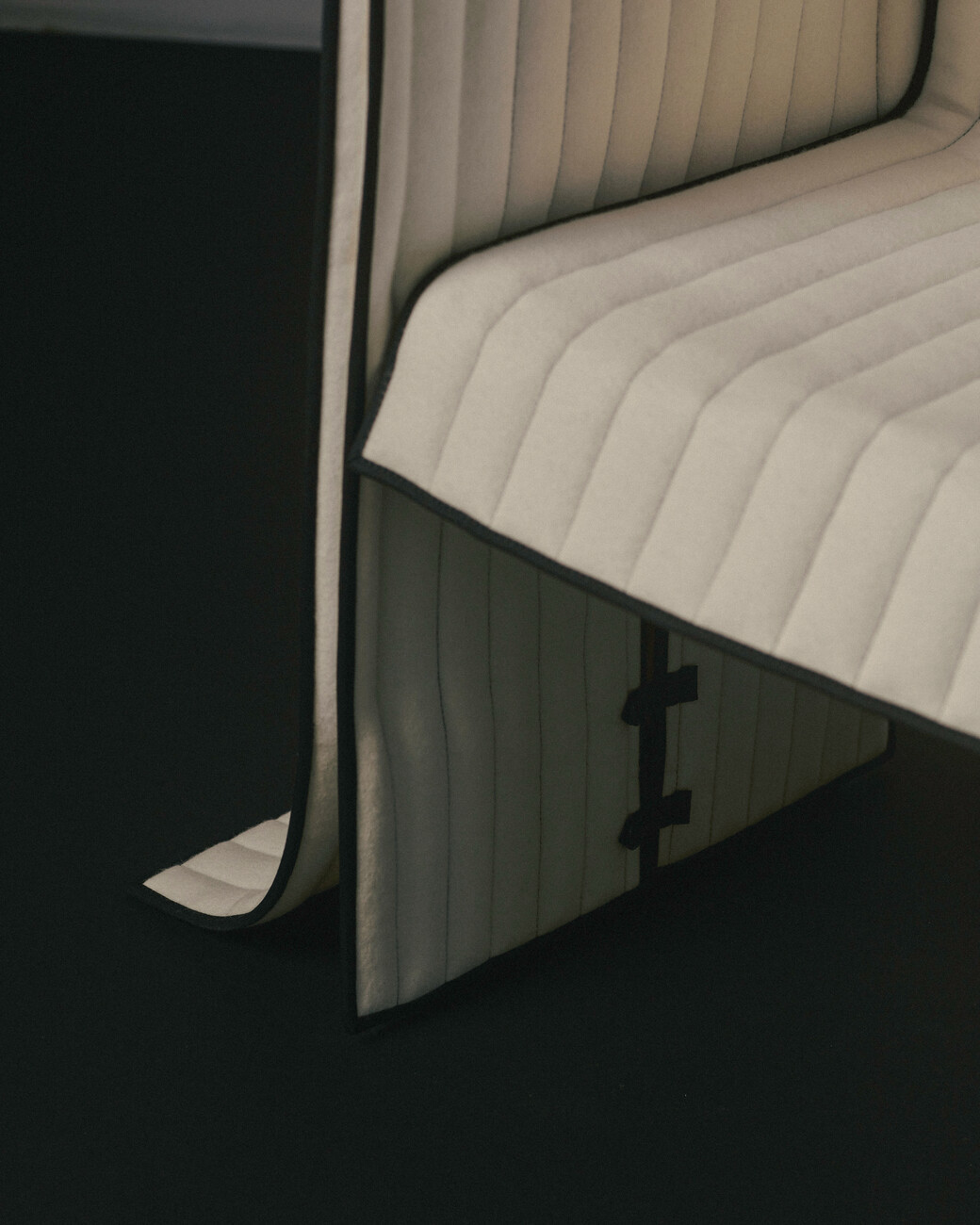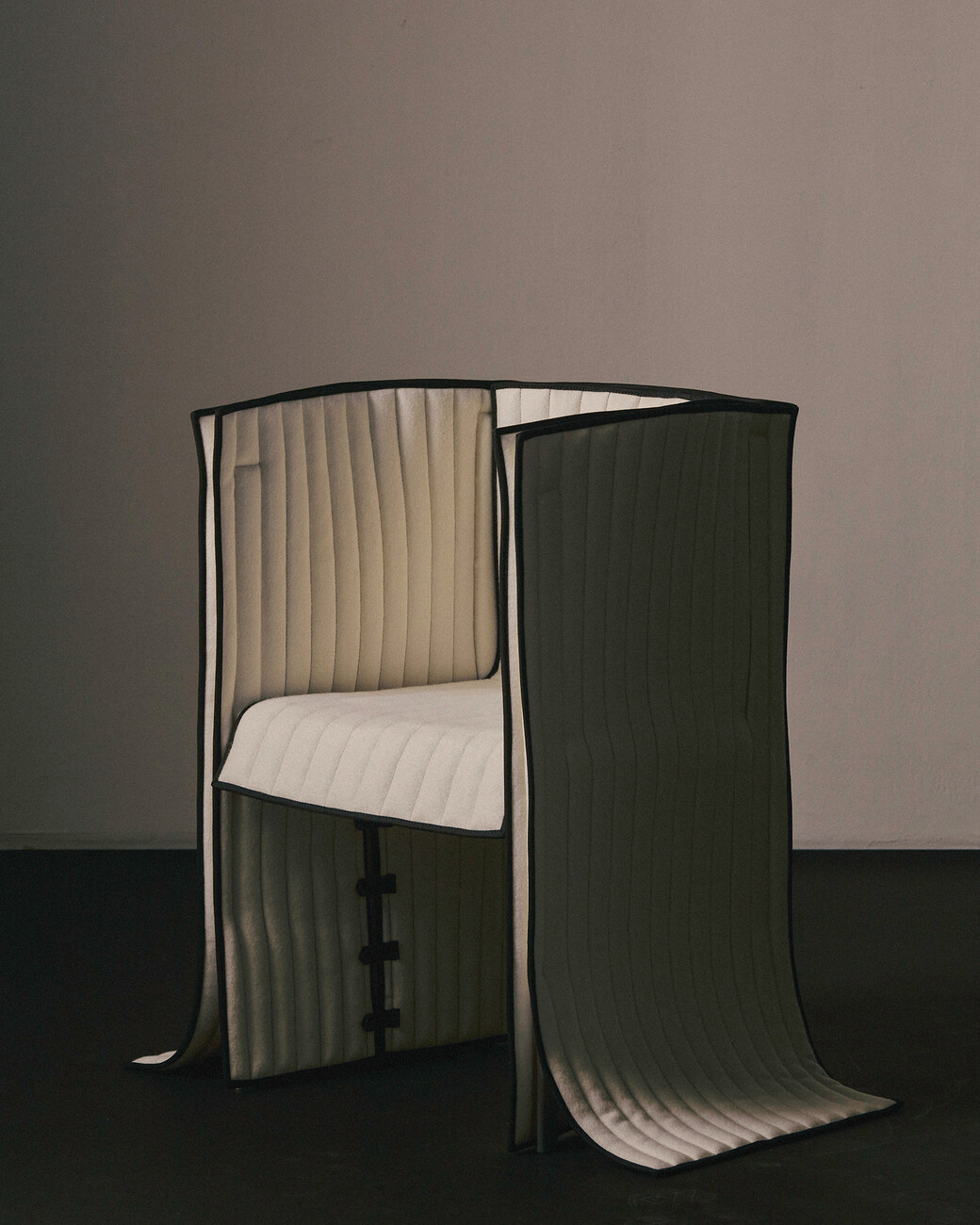YOUNG TALENTS
Materials, crafts and community
Anika Paulus: Lærke, what are you currently working on?
Lærke Ryom: A bespoke furniture series called Blue, two chairs with upholstery made out of re-valued denim. It's for an exhibition at Fabrikken for Kunst og Design, with the theme of the history of the building and the surrounding area of Sundholm. There are different small hints to the theme of the exhibition. The thought was to make furniture pieces that would reintroduce textile, as Fabrikken used to be a washery, where people with different struggles were placed to work. From a historical perspective, denim is the working uniform for manual labour. In the fabric I am making out of small denim scraps, their different blue tones come together on the surface of the weaving, almost like water and waves. And the exhibition room has bluish green colours on the wall.
Was the choice to work with denim instantly clear to you?
Lærke Ryom: I work a lot with creating samples and exploring different materials by hand – almost like talking to them. I made a lot of samples out of different textiles that I had around from other projects, that were too small to be used but also too big to be thrown out. I was finding a way to use these kinds of textile waste pieces. And if I want to do something where I need a huge amount of small material scraps, then how do I find it? The solution came through the Red Cross and their systematic collection of clothing waste, where you can buy jeans with holes or so that can't be sold anymore in bulk. So it all came together quite organically from working with the material and sourcing how to find enough of this irregular material.
Your furniture pieces are quite different at a first glance. Is there a common thread running through your work?
Lærke Ryom: The Off-Cut Collection that I made out of Dinesen wood, which was also with a waste material, has similarities to the Blue project. I always start out with samples and work by hand, which gives so much inspiration for the process and is really important for the outcome. And I begin to see that I am very drawn to repetition. The patterning appearing through repetition is something that I find really interesting. I want the design that I make to be something that you can use and look at for a long time, and explore new details everytime you look at it. When I'm doing the repetitions with my hands my mind can wander. I am really focused on the project I'm working on, but at the same time I can drift into the future or in the past. It is often there that I create ideas for the future. It is a time to reflect for me, and very important for my work.
You are working with wood, metals, textiles, you weave and quilt. All that requires different handcraft skills and techniques. How do you approach them?
Lærke Ryom: As we already established, I love working with my hands. The process starts with taking a material and asking myself, how I could manipulate this into being something that is very full of character and different than before. I start with small experiments, samples and ideas and take it step by step. Letting the material move freely and giving some character back. I do something and this was my intention, but the material also gives something to the piece. I love teaching myself all the new skills, it is really part of my process. I am learning it, and then I start.
Lærke Ryom: At times I get a little frustrated because I'm not making it easy for myself with all this. I could just buy a nice fabric and put it on. But I feel it's also reflected in the final pieces that the hand has been touched over and over. Taking a pair of jeans that no one wants, with holes on the knees and the butt and stains, and doing a gesture of revaluing the material is something that is present in the final pieces.
Do you have a favourite material?
Lærke Ryom: I don't think I will ever just do one material, as each has so much to give. But I'm really interested in working with textiles at the moment. Working with metal and wood, everything is very planned and intentional. In textile you also need to plan, but it is more alive as a material. It gives something back – if it's the draping or the movement in the material. It's very fun to work with. Bringing materials in a new context is really interesting to me – like textiles into furniture. For me, working with my hands is a way of understanding the world. I understand by touching and by engaging with the world with my body. We are used to having textile as a huge part of our lives, and there is a strong physical relation between furniture and the body. We relate to it both in scale and we interact in different ways, sit by the table, sit on the stool. We are wrapped in it in our clothes. Taking some techniques from or adding some references to clothing, I can work with this relation, creating a closer relation to a piece of furniture.
Using the denim scraps or the off-cuts from Denisen, you gave a waste product new value. How important is that idea for your work?
Lærke Ryom: Being conscious about material use and not being wasteful is a huge part. Today, sustainability is not something that you apply or choose to apply. It is fundamental. There are different strategies when designing; it can be working with by-products and minimal construction or designing for disassembly, where all the different materials can be separated at the end. For me, it’s meaningful to find value in by-products. It can be a good starting point, a creative frame for your work and inspiring because then you can really push the boundaries of that frame. It can bring you to new places. If I had made for example the Off-Cut Collection of new material, it wouldn't look as it does now. The shapes, the formations, everything is based on the different pieces of by-product. The varying widths, sizes and qualities of the flooring planks inspired the idea of the off-sitted structures that are so characteristic for the pieces.
You are one of the founders of Ukurant, an exhibition platform and creative community to reinforce the position of emerging designers.
Lærke Ryom: Ukurant is a Danish word often used in production. In serial production, you want everything to be precisely the same. When something comes out a little different, falls out of the ordinary, you say that it is ukurant. Which in this context is mostly negative, but it can also be interpreted positively that you are out of the ordinary. I founded Ukurant with three of my co-students and friends, in a gap year between the Bachelor and the Master. In this year out of school we tried to understand what is going on in the industry. How do we engage? And what are we to expect in two years when we graduate from our masters? We found ourselves missing the community we knew from school, where we learned from and supported each other. We found ourselves without a place to turn to and where we could see ourselves as really young designers. We wanted to create a space and community to share experiences, thoughts, and competences, for teaching and supporting each other. We believe that collaborating and not competing is the way to succeed in this industry.
“When you stand alone, you can’t make enough noise for people to hear you.”
One goal of Ukurant was to create a platform so professional you could speak to the established design scene and the industry. How were you met?
Lærke Ryom: Sometimes we felt patted on the head, as in “oh you have a lot to learn yet still.” Of course we do, but we also have a lot to give. The exhibition during 3daysofdesign has been well received. Product developers from big design companies in Denmark visited the exhibition, and some exhibitors were contacted to create a design proposal. Of course, we will always strive for more, but I think that the industry is positive. Some are questioning the commercial side of Ukurant, because we are also exhibiting experimental design. But none of the exhibited pieces are the same. Some projects are ready to put into production, while others should be seen as an investigation to push boundaries. Some are suggesting a new way of working with materials, some are challenging our understanding of aesthetics. There are different agendas for all pieces and if you understand that premise, you really get something from the exhibition.
You also talk openly about the economic challenges for young designers. How was that received?
Lærke Ryom: It is a sensitive topic, but was actually well received. Everyone recognises that there is a problem. I don't think anyone feels really comfortable with not paying young designers for sketch fees, with late royalties, and low or unpaid work required to get industry experience. it. But we are missing the really open conversation about it, and there is still a long way to go. That's why community is so important. Ukurant is a space to talk about things openly and honestly. That we might be struggling because there’s not enough projects. That we have too much work but too little pay. A space to discuss finances without it taking value from you as a designer. If we all are aware that there is a problem and continue to talk about it as a problem, I think there will come a generation that just won't stand for it.
Is this something you give your students to take with them, being also a guest teacher?
Lærke Ryom: Absolutely. I want to share what I was inspired by, when I started at the design school. The first thing our teacher said to us was: look around. You’re each other's biggest resource. We really took that in, and it infiltrated the whole five or six years at school. And that's something that I hope for everyone. Don't compete and instead use each other. It's both more fun and you will get better quicker if you work together.
